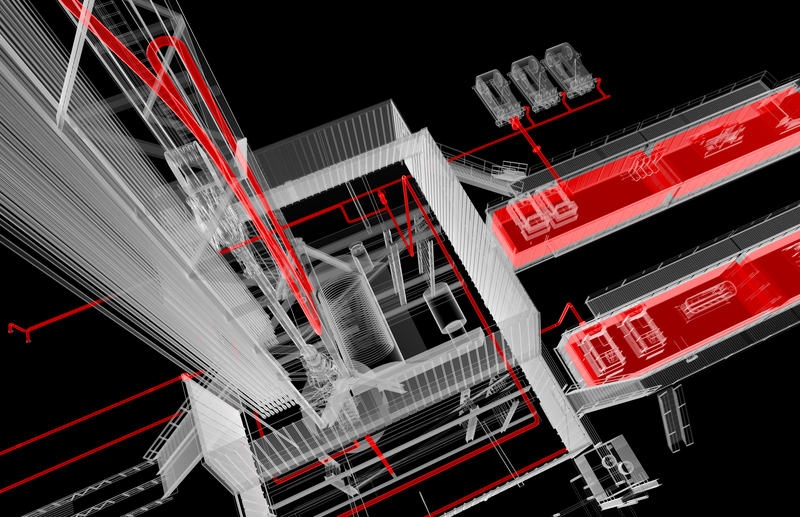 Search
Search
 Search
Search

Baroid solutions efficiently transfers, processes, and stores drilling waste for offshore operations
Download PDF
OFFSHORE LUANDA

Deep water

Angolan offshore waste environmental legislation changed on January 1, 2016, with a zero-discharge ruling (Executive Decree No. 97/14) that governed the management of operational discharges generated in the course of onshore and offshore petroleum operations. This change presented the operator with a challenge in reducing and treating drilling-produced waste offshore, while also reducing the economic impact of these processes to its drilling program.
Additional equipment and systems were required to process all the drilling-produced waste from two extensive and challenging drilling campaigns. The operator also needed to reduce or eliminate the costs associated with treating oil-contaminated waste and shipping drilled cuttings to onshore processing units.
To meet the customer's requirements, a combination of equipment and new technology was identified to fulfill this challenge. Halliburton recommended the BaraPhase thermomechanical cuttings cleaner (TCC) as the primary solution for the drilled solids processing.
The BaraPhase TCC required ancillary equipment for the effective and efficient execution of zero discharge. This included transfer systems and storage units for drilled cuttings. Halliburton provided the BaraStream™ SV400 transfer system, along with BaraStream™ Honey Comb Base (HCB™) tanks for the storage of drilled cuttings. These systems are interlinked on board the rigs through a network of transfer lines. This configuration of equipment is managed with a strategic manifold allowing total flexibility and control while transferring, processing, and storing drilling waste on board the rig.
Due to the strict Angolan zero-discharge regulations, the TCC unit’s operations had to be modified, as normal TCC operations include rehydrating the drilled cuttings and then flushing the processed drilled cuttings overboard. The zero-discharge regulations required the dried cuttings to be stored and transferred to Luanda for final disposal to landfill.
The process of drying and storing the cuttings had to then include a cooling element to protect the vessels from heat damage. Halliburton worked closely with its suppliers to engineer, manufacture, and test a dried-solids cooler (DSC). This was achieved and delivered in short time by working in conjunction with Hellenes AS in Norway. The DSC has performed well throughout the campaign to date, reducing the dried solids from 180°F (82°C) to below 50°F (10°C) with minimal retention time available aboard the rig.
Since the zero-discharge regulation prohibited overboard dumping and also required the cooling, storing, and transferring of dried solids, a resulting challenge was to control and contain the dust created by moving the ultra-fine dried solids. A new dust management system was deployed to help control the SV400 pulse discharge cycle and the HCB vent line discharge pressure. With pretreated dust filter socks sourced from South Africa and careful air pressure management, the Halliburton team was able to control the SV400 cycle, thus reducing the velocity as much as possible while still successfully transferring the solids. Controlling the dust was a major achievement with all lessons learned being employed on board the other two rigs for future operations.
The entire installation was an extensive and complex project, from the original rig surveys and design concepts to the shipping and installation. The Halliburton BaraSolve™ engineering and project management team was engaged, supported locally by the Baroid Surface Solutions™ team in Angola. There were many challenges and hurdles to overcome on all rigs, such as fitting all these large components onto rigs that were not designed to accommodate the systems. The Baroid team was challenged with installing the TCC and all its associated components onto rigs that were already fully operational drilling rigs. Baroid ran the BaraG-Force™ V133 vertical cuttings dryers and skip-andship operations throughout the install until commissioning had been complete
All three equipment packages were successfully installed and commissioned, and have now processed and treated BaraStreamâ„¢ SV400 transfer system thousands of tons of drilled cuttings and also processed thousands of cubes of slops without incurring any accidents, incidents, or nonproductive time.
Savings to the client have been seen in three areas: increased recovery of base oil, decreased skip-and-ship operations, and reduced slops treatments. As of June 1, 2017, the total tonnage processed through the BaraPhase units was approximately 7,445 tons, and these operations have provided the operator with cumulative savings of USD 17,266,663. Savings on the individual rigs were as follows: Rig A, USD 7,540,429; Rig B, USD 5,407,281; and Rig C, USD 4,318,953.
Tons of drilling waste processed
USD saved across three rigs

Halliburton delivers separation solutions that can improve the efficiency of your operations.

Comprehensive and efficient technology solutions for optimal fluid recovery and minimal environmental impact.

We carefully plan each waste management solution according to local conditions to maximize drilling efficiency.
